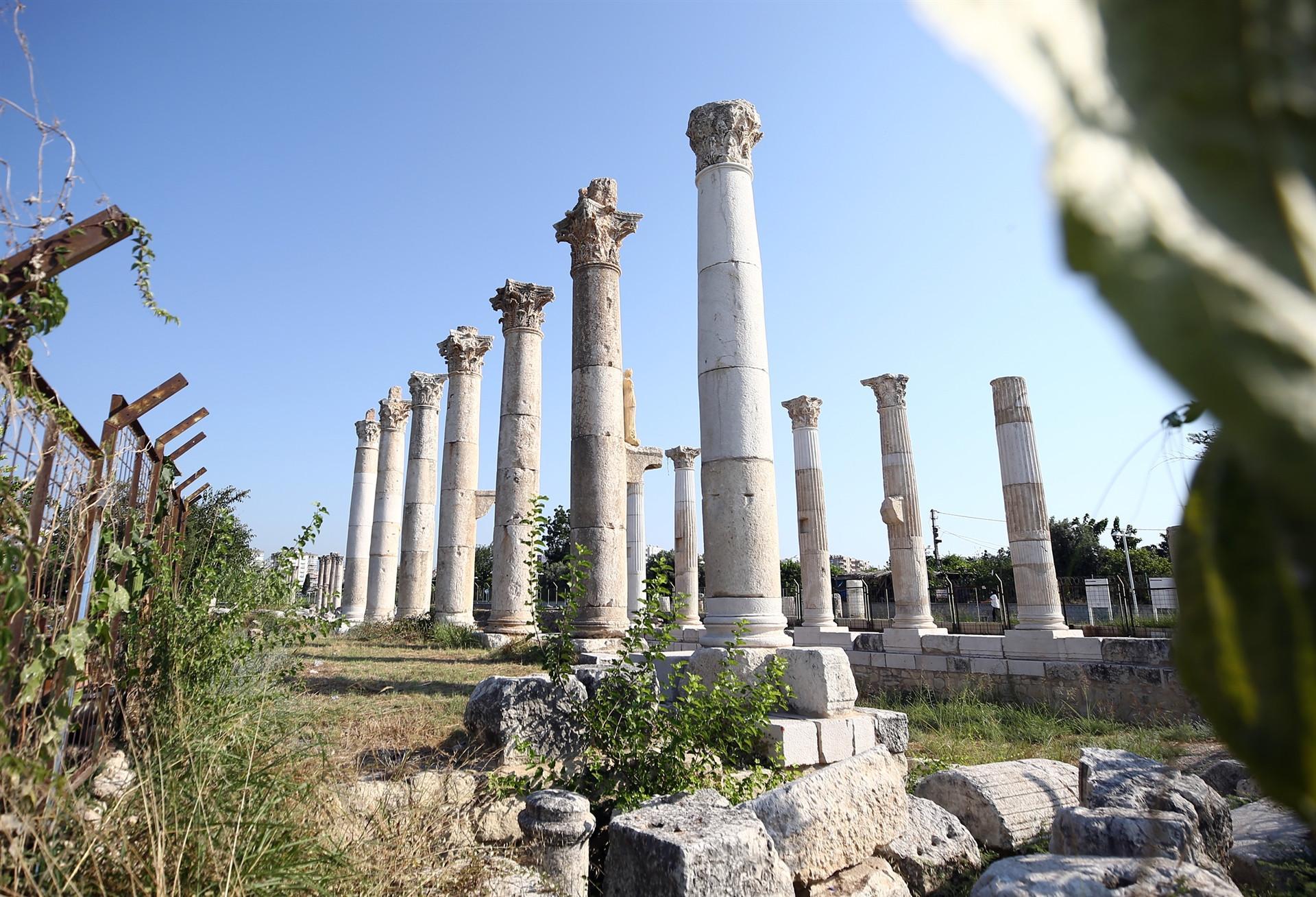Aratos’ mausoleum searched in Soli Pompeiopolis
MERSİN

Archaeological excavations in the ancient city of Soli Pompeiopolis in the southern province of Mersin has focused on uncovering the mausoleum of Aratos, the famous astronomer and poet of the Hellenistic period, to lay bare all its details.
Archaeological work has resumed in the ancient city in Mezitli district, which was one of the most important ports in the 2nd and 3rd centuries B.C. and whose columns have been preserved until today.
Excavations carried out by a team of 10 people led by Professor Remzi Yağcı, the head of the Department of Museology at Dokuz Eylül University, focused on the area next to the columned street, where the mausoleum of Aratos, the famous poet and astronomer of the Hellenistic period, is located.
Speaking to state-run Anadolu Agency, he said that Aratos also came to the fore as a philosopher, mathematician and astronomer.
“Aratos is among the most famous people of his era. He is an important person who maintains this reputation to this day. Born in Soli, he is the father of astronomy and poet. Although Aratos died in Pella in Central Macedonia, a mausoleum was built here because this is his birthplace. Therefore, it is an important monument,” he said.
A sarcophagus in engravings
Yağcı also mentioned the process of finding the location of the mausoleum, saying, “The mausoleum remained underground for many years after it was noticed by travelers in the 19th century. It is seen as a sarcophagus in the engravings. For this reason, it was named Aratos’ tomb by the paleographer Victor Langlois. Afterwards, the place of his grave was marked by Ghevont Alishan on a scaled plan. This is a crater-like place, a monumental building. It has a symbolic meaning. It is not a very practical building functionally, but it has a monumental and symbolic significance. The aim is primarily to restore this place.”
Stating that they wanted to bring the Soli Pompeipolis and the mausoleum as a whole to the world of archeology, Yağcı said, “Soli Pompeiopolis was a rich city that lived its heyday in the Hellenistic Period. During the Roman Period, it maintained its developed city characteristic. It has a monumental colonnaded street, especially from the 2nd and 3rd centuries, and it is connected to the port. With this feature, it is a very important port city for the Eastern Mediterranean. We want to reveal this unity. We want to establish the connections between these monumental structures by making some expropriations and open this place to visitors. That is the purpose of the excavation.”
Stating that the studies initiated to find the mausoleum caused excitement in the world of archeology, Yağcı said, “In this excavation season, we focused on the tomb of Aratos. Our aim is to reveal the true nature of this structure, which was called the monumental tomb of Aratos by the 19th century travelers, and to finish the archaeological excavation. We want to prepare restoration and restitution projects and turn this place into a world-class visitor center.”
To be completed digitally first
Mersin University Department of Archeology lecturer Professor Deniz Kaplan said the works will continue until September and noted they removed the stones in order to understand both the plan and the upper facade of the building.
Stating that the study will also be beneficial for a possible restoration, Kaplan said, “We first number the removed stones, and then take them to the stone field according to their number. All of these constitute the infrastructure works of the restoration. In the next process, the aim is to complete the structure first in the digital environment. Then we plan to restore the structure.”
Stating that they considered the ancient city, the colonnaded street and the port as a whole, Kaplan added that the mausoleum of Aratos is a part of this whole.
















